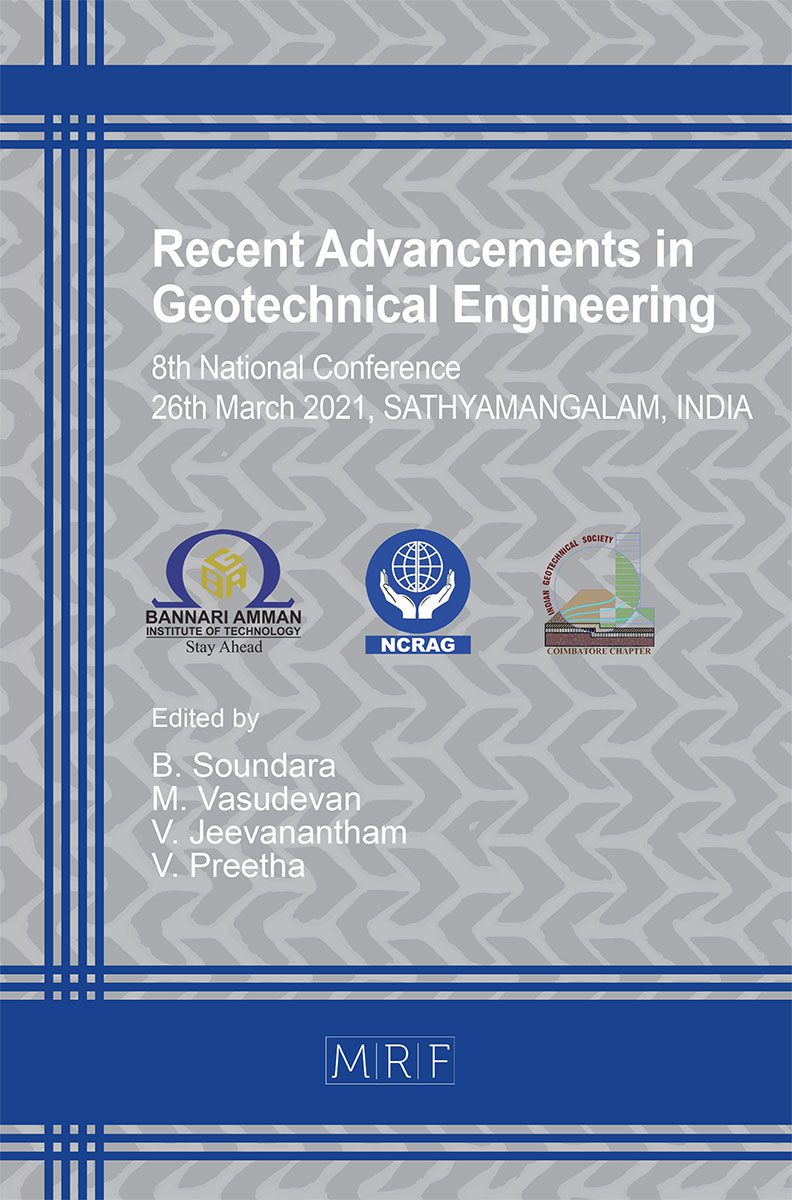Experimental Investigations on Eco-Friendly Helium-Mist Near-Dry Wire-Cut EDM of M2-HSS Material
Boopathi Sampath, M. Sureshkumar, T. Yuvaraj, D. Velmurugan
download PDFAbstract. In this paper, helium-assisted near-dry wire-cut electrical discharge machining (NDWEDM) method molybdenum wire has been used to reduce the environmental impact and to cut M2-HSS material. The pressurized non-reacting helium gas mixed with a small amount of water (Helium-mist) is used as the dielectric fluid to accomplish adequate cooling and flush-out debris. The new experimental setup has been developed to conduct the near-dry WEDM tests using the L9 orthogonal array of the Taguchi technique. The input parameters such as voltage (V), pulse-width (PW), pulse-interval (PI), and flow rate (F) of mixing water and output variables are the material removal rate (MRR) and surface roughness (Ra). It was observed that MRR and Ra are amplified by the rise in voltage and pulse-width, and flow rate conversely, the pulse interval minimizes the responses. The percentage of contribution of pulse width, voltage, pulse interval and flow rate are 24.06%, 32.98%, 12.75% and 30.21% on MRR and 20.94%, 22.22%, 47.86% and 8.97% on Ra respectively. Finally, the confirmation trials have been accomplished to validate the foreseen best parameter sets on optimal responses.
Keywords
Near Dry WEDM, Helium, M2-HSS, Minimum Quantity Lubrication, Taguchi Method
Published online 8/15/2021, 6 pages
Copyright © 2021 by the author(s)
Published under license by Materials Research Forum LLC., Millersville PA, USA
Citation: Boopathi Sampath, M. Sureshkumar, T. Yuvaraj, D. Velmurugan, Experimental Investigations on Eco-Friendly Helium-Mist Near-Dry Wire-Cut EDM of M2-HSS Material, Materials Research Proceedings, Vol. 19, pp 175-180, 2021
DOI: https://doi.org/10.21741/9781644901618-22
The article was published as article 22 of the book Recent Advancements in Geotechnical Engineering
![]() Content from this work may be used under the terms of the Creative Commons Attribution 3.0 licence. Any further distribution of this work must maintain attribution to the author(s) and the title of the work, journal citation and DOI.
Content from this work may be used under the terms of the Creative Commons Attribution 3.0 licence. Any further distribution of this work must maintain attribution to the author(s) and the title of the work, journal citation and DOI.
References
[1] A.A. Munoz, P. Sheng, An analytical approach for determining the environmental impact of machining processes, J. Mater. Process. Tech., 53 (1995) 736–758. https://doi.org/10.1016/0924-0136(94)01764-R
[2] S.H. Yeo, H.C. Tan, A.K. New, Assessment of waste streams in electric-discharge machining for environmental impact analysis, Proc. Inst. Mech. Eng. Part B J. Eng. Manuf., 212 (1998) 393–400. https://doi.org/10.1243/0954405981515996
[3] M.S. Hewidy, T.A. El-Taweel, M.F. El-Safty, Modelling the machining parameters of wire electrical discharge machining of Inconel 601 using RSM, J. Mater. Process. Technol., 169 (2005) 328–336. https://doi.org/10.1016/j.jmatprotec.2005.04.078
[4] S. Boopathi, K. Sivakumar, Experimental investigation and parameter optimization of near-dry wire-cut electrical discharge machining using multi-objective evolutionary algorithm, Int. J. Adv. Manuf. Technol., 67 (2013) 2639–2655. https://doi.org/10.1007/s00170-012-4680-4
[5] S. Boopathi, K. Sivakumar, Study of water assisted dry wire-cut electrical discharge machining, Indian J. Eng. Mater. Sci., 21 (2014) 75–82.
[6] S. Boopathi, K. Sivakumar, Optimal parameter prediction of oxygen-mist near-dry Wire-cut EDM, Int. J. Manuf. Technol. Manag., 30 (2016) 164–178. https://doi.org/10.1504/IJMTM.2016.077812
[7] S. Boopathi, K. Sivakumar, Experimental comparative study of near-dry wire-cut electrical discharge machining (WEDM), Eur. J. Sci. Res., 75 (2012) 472–481.
[8] S. Boopathi, S. Myilsamy, Material removal rate and surface roughness study on Near-dry wire electrical discharge Machining process, Mater. Today Proc., xx (2021) xx–xx. https://doi.org/10.1016/j.matpr.2021.02.267
[9] Y. Jia, B.S. Kim, D.J. Hu, J. Ni, Parametric study on near-dry wire electrodischarge machining of polycrystalline diamond-coated tungsten carbide material, Proc. Inst. Mech. Eng. Part B J. Eng. Manuf., 224 (2010) 185–193. https://doi.org/10.1243/09544054JEM1602
[10] S. Boopathi, Experimental investigation and parameter analysis of LPG refrigeration system using Taguchi method, SN Appl. Sci., 1 (2019) 892. https://doi.org/10.1007/s42452-019-0925-2
[11] S.K. Saha, S.K. Choudhury, Experimental investigation and empirical modeling of the dry electric discharge machining process, Int. J. Mach. Tools Manuf., 49 (2009) 297–308. https://doi.org/10.1016/j.ijmachtools.2008.10.012
[12] C.C. Kao, J. Tao, S. Lee, A.J. Shih, Dry wire electrical discharge machining of thin workpiece, in: Trans. North Am. Manuf. Res. Inst. SME, 2006: pp. 253–260.
[13] C.C. Kao, J. Tao, A.J. Shih, Near dry electrical discharge machining, Int. J. Mach. Tools Manuf., 47 (2007) 2273–2281. https://doi.org/10.1016/j.ijmachtools.2007.06.001
[14] S. Abdulkareem, A.A. Khan, M. Konneh, Reducing electrode wear ratio using cryogenic cooling during electrical discharge machining, Int. J. Adv. Manuf. Technol., 45 (2009) 1146–1151. https://doi.org/10.1007/s00170-009-2060-5
[15] S. Boopathi, Experimental Comparative Study of Near-Dry Wire-Cut Electrical Discharge Machining ( WEDM ), 75 (2012) 472–481.












